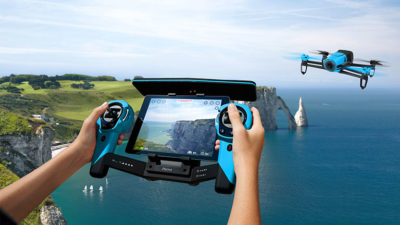
While drone adoption is increasing rapidly for personal and commercial use, delivery drones are expected to not be a major factor in the market for the next several years, according to a new report from Gartner.
The research firm said that delivery drones still face several complications like return on investment, cost of drones, operational costs, and a single customer delivery.
Gartner senior research analyst Gerald Van Hoy said delivery drones will be mired in logistical issues like the time required to return a drone to its origin point after delivery, and will amount to less than 1% of the commercial market by 2020.
“We expect that delivery drones will begin finding a niche in business-to-business applications first, particularly for internal services within one company where logistics will not be such a big factor.”
Gartner, however, said the rest of the drone market will continue to grow.
The personal and commercial drone market is growing rapidly with the global market revenue predicted to increase by 34%, reaching more than $6bn by the end of this year. By 2020, the market is expected to cross $11.2bn.
Gartner forecasts that while the commercial market will generate more revenue than the personal market, there will only be about 174,100 units of commercial drones shipped in 2017, compared to 2.8 million personal drones.
As commercial drones have higher average selling prices, it will outpace the revenue of personal drones but will remain a much smaller market.
The forecast sees agriculture as the first big commercial drone market. Drone adoption in agriculture will likely top out at 7% through 2020.
Read more: How drones are helping the National Trust save historic buildings
Gartner believes industrial inspections will be the most common commercial drone use case for oil and gas, energy, infrastructure, and transportation. The inspection segment is anticipated to dominate with 30% of the commercial drone market through 2020.
Van Hoy said the commercial and personal drone markets are increasingly overlapping as lower-priced personal devices are being used for commercial ventures.
“Personal drone vendors are now aggressively trying to position themselves in the commercial market. Recent technological advances blur the lines, allowing personal drones to be used in many special-purpose applications such as surveillance, 3D mapping and modeling,” Van Hoy added.






